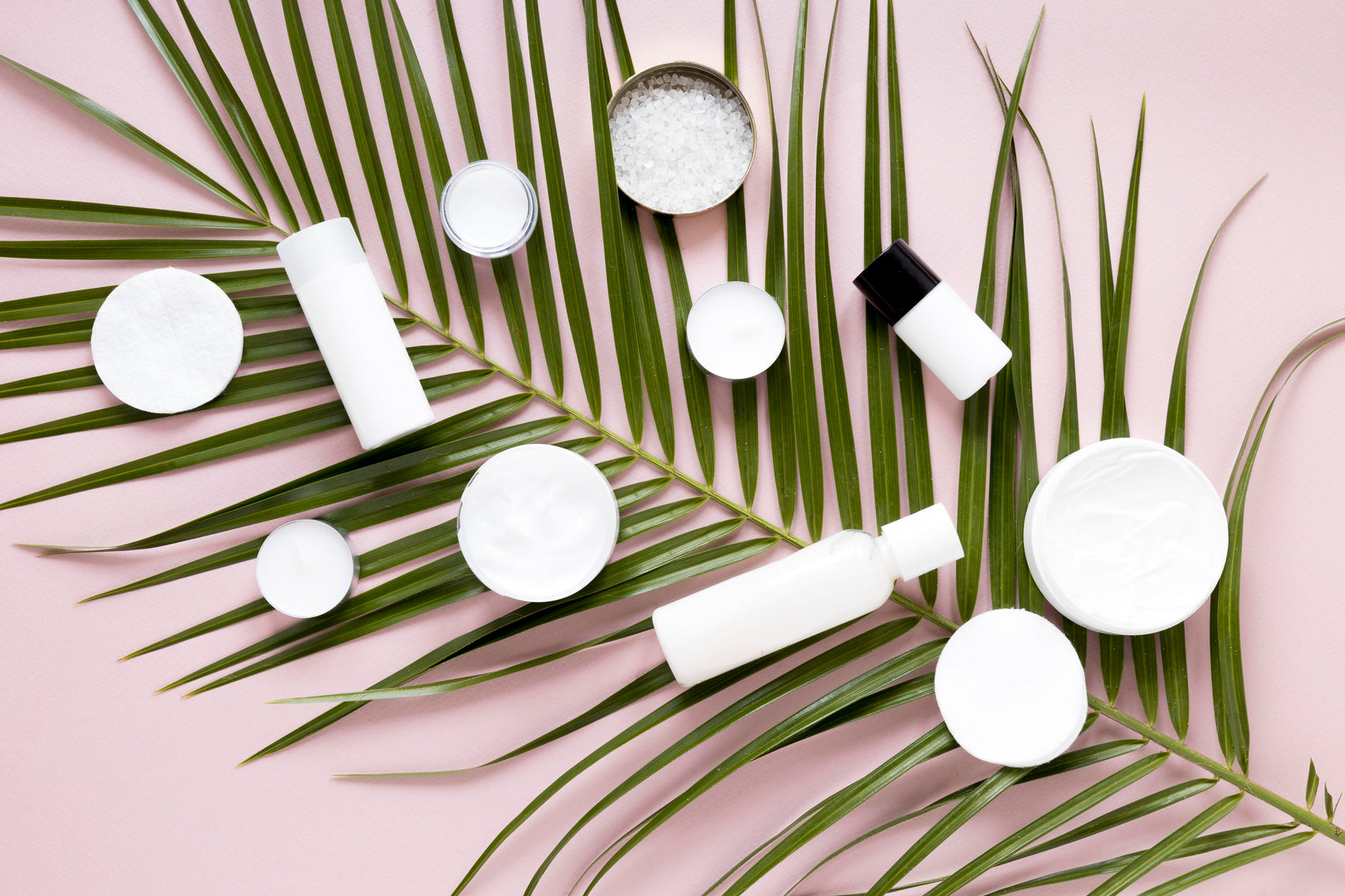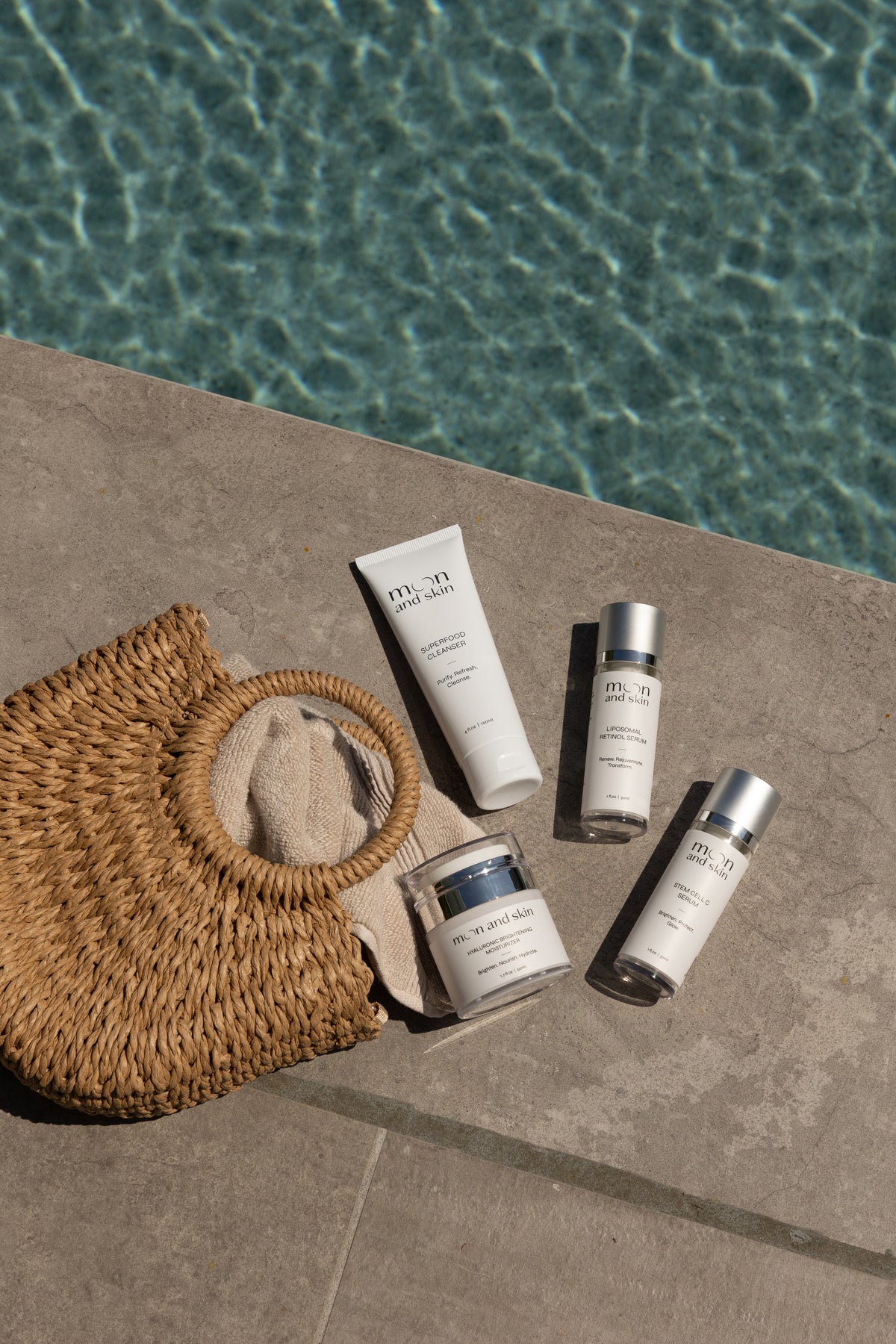Table of Contents
Introduction
Have you ever wondered why your skin seems to lose its youthful glow over time? According to recent studies, our skin can lose up to 30% of its moisture content as we age, leading to dryness, dullness, and an uneven complexion. This statistic is not just alarming; it highlights the importance of hydration and protection in our skincare routines. At Moon and Skin, we understand that navigating the world of skincare acids can be confusing. That’s why we’re here to simplify the process and help you harness the incredible benefits of hyaluronic acid and vitamin C serum.
In this blog post, we will explore the synergy between hyaluronic acid and vitamin C, how to effectively incorporate them into your skincare routine, and why these ingredients are essential for achieving a radiant complexion. Whether you’re a skincare novice or a seasoned enthusiast, our mission is to empower you with knowledge that enhances your skin journey—much like the phases of the moon.
We’ll cover the benefits of both ingredients, how to layer them correctly, and offer tips for maximizing their effectiveness. By the end of this post, you’ll have a clear understanding of how to use hyaluronic acid and vitamin C serum in your daily regimen to achieve the glowing, youthful skin you deserve.
Understanding the Ingredients: Hyaluronic Acid and Vitamin C
What is Hyaluronic Acid?
Hyaluronic acid (HA) is a powerful humectant that can hold up to 1,000 times its weight in water. It’s a naturally occurring substance in our skin, responsible for maintaining hydration, plumpness, and elasticity. As we age, the levels of hyaluronic acid in our skin decrease, leading to dryness and the appearance of fine lines and wrinkles.
Key Benefits of Hyaluronic Acid:
- Intense Hydration: HA draws moisture from the environment into the skin, providing a deep hydration boost.
- Skin Plumping: Its ability to retain moisture helps to fill in and plump the skin, reducing the appearance of fine lines.
- Improved Elasticity: Regular use of hyaluronic acid can enhance skin elasticity, promoting a youthful appearance.
What is Vitamin C?
Vitamin C is a potent antioxidant that protects the skin from environmental stressors, such as pollution and UV rays. It plays a critical role in collagen synthesis, helping to maintain skin firmness and elasticity. Vitamin C also helps to brighten the complexion and reduce the appearance of hyperpigmentation.
Key Benefits of Vitamin C:
- Brightening Effect: Vitamin C helps to even out skin tone and reduce dark spots, giving the skin a radiant glow.
- Antioxidant Protection: It neutralizes free radicals, preventing oxidative stress and premature aging.
- Collagen Production: By stimulating collagen synthesis, vitamin C helps to maintain skin structure and firmness.
The Synergistic Effect of Hyaluronic Acid and Vitamin C
When used together, hyaluronic acid and vitamin C create a powerful skincare duo. While vitamin C works to brighten and protect the skin, hyaluronic acid ensures that the skin remains hydrated and plump. This combination not only enhances the efficacy of each ingredient but also provides comprehensive benefits for overall skin health.
How to Incorporate Hyaluronic Acid and Vitamin C Serum into Your Routine
Incorporating hyaluronic acid and vitamin C serum into your skincare routine is a straightforward process. Here’s how to do it effectively:
Step 1: Start with a Clean Canvas
Before applying any serums, it’s essential to cleanse your skin thoroughly. We recommend using our Superfood Cleanser, formulated with HydroProtein Technology to gently cleanse while nourishing your skin.
Step 2: Apply Hyaluronic Acid
After cleansing, apply a few drops of hyaluronic acid serum to damp skin. The moisture on your skin will help the serum penetrate deeper, maximizing its hydrating effects. Our Hyaluronic Brightening Moisturizer is an excellent choice, combining the benefits of hyaluronic acid with kojic acid for added brightness.
Step 3: Layer with Vitamin C Serum
Once the hyaluronic acid has absorbed, follow with our Stem Cell C Serum. This serum uses advanced plant-cell technology and a stable vitamin C to brighten, hydrate, and protect your skin. Apply a few drops and gently press it into your skin, focusing on areas that may need extra attention.
Step 4: Seal in Hydration
To lock in the benefits of both serums, finish with a moisturizer. If you prefer a lighter texture, our Hyaluronic Brightening Moisturizer is perfect. For those needing more hydration, you might want to consider a richer cream that suits your skin type.
Step 5: Sunscreen is a Must
In the morning, always follow your skincare routine with a broad-spectrum sunscreen. Vitamin C can make your skin more sensitive to the sun, and protecting your skin is crucial in maintaining its health and preventing further damage.
Tips for Maximizing the Benefits of Hyaluronic Acid and Vitamin C
1. Timing Matters
Using vitamin C in the morning helps to protect your skin from daily environmental stressors. Meanwhile, hyaluronic acid can be used both in the morning and evening to maintain hydration levels.
2. Don’t Overload Your Skin
While layering products can be beneficial, too many active ingredients at once can overwhelm your skin. Stick to a few key products to allow your skin to adjust and thrive.
3. Patch Test New Products
If you’re trying a new product, especially one with potent ingredients like vitamin C, perform a patch test. Apply a small amount to a discreet area and wait 24 hours to see if any reaction occurs.
4. Stay Consistent
Consistency is key in skincare. Make sure to incorporate hyaluronic acid and vitamin C into your daily routine for the best results. Over time, you’ll begin to notice improvements in your skin’s hydration and overall appearance.
Special Considerations
While both hyaluronic acid and vitamin C are generally well-tolerated, it’s important to consider your skin type and any sensitivities you may have.
For Oily or Acne-Prone Skin
If you have oily or acne-prone skin, lightweight formulations are essential. Look for serums that won’t clog pores but still deliver the hydrating and brightening benefits you’re looking for.
For Dry or Sensitive Skin
If you have dry or sensitive skin, ensure you follow up hyaluronic acid with a rich moisturizer to prevent any dryness. Gradually introduce vitamin C into your routine to avoid potential irritation.
For Combination Skin
If your skin is combination, you may want to focus on applying products where they’re needed most. Use hyaluronic acid on drier areas and vitamin C on areas that require brightening.
Conclusion
By now, you should have a solid understanding of how to effectively use hyaluronic acid and vitamin C serum in your skincare routine. These powerhouse ingredients work in harmony to hydrate, brighten, and protect your skin, leading to a more radiant complexion.
We invite you to experience the benefits of our Bundle & Save collection, which includes our essential products designed to work beautifully together. Together, let’s celebrate your skin’s journey through every phase of life, ensuring it receives the clean, thoughtful care it deserves.
FAQ
Q: Can I use hyaluronic acid and vitamin C together?
A: Absolutely! These two ingredients complement each other, enhancing hydration and brightening effects.
Q: How often should I use vitamin C serum?
A: For best results, use vitamin C serum daily in the morning.
Q: Is hyaluronic acid safe for all skin types?
A: Yes, hyaluronic acid is suitable for all skin types, including sensitive skin.
Q: Can I use retinol with hyaluronic acid and vitamin C?
A: Yes, you can use these ingredients together, but it’s best to space them out to minimize irritation.
Q: How long until I see results?
A: While some hydration benefits may be immediate, visible improvements in brightness and texture may take a few weeks of consistent use.
By integrating these powerful ingredients into your routine, you’re setting the stage for beautiful, glowing skin—no matter what phase of life you’re in. Explore our products and start your journey today!







